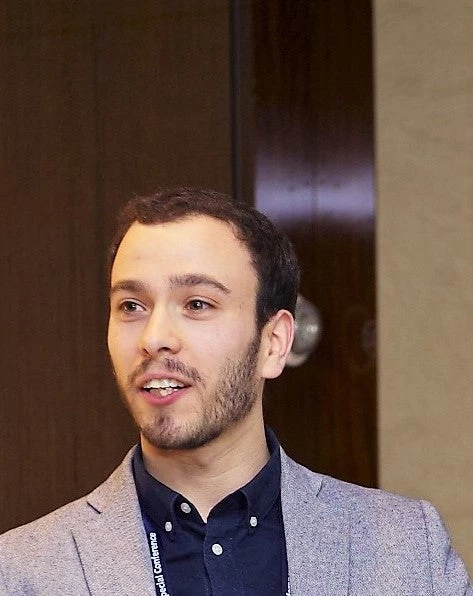
Editors Note: “Data for Better Lives Trailers” is a blog series that shares insights from research in progress for the World Bank Group’s next World Development Report, to encourage a discussion leading up to the report’s publication in early 2021.
At the same time as the number of people suffering from COVID-19 is increasing at a rapid pace, so is the amount of data related to the pandemic. A distinguishing feature of COVID-19 case data from many past crises—and development data in general—is their timeliness. Many have formed a habit of checking new COVID-19 numbers daily as they trickle down all over the world, and it is easy to take this feature of the data for granted. Yet in the developing world, timely data are in low supply. Among low income countries, less than 40% have data on poverty since 2015, almost 3 in 10 haven't taken a population and housing census in the past 10 years, and only 9% have monthly or quarterly industrial production indices to track current economic activity.[i]
A stark example of the relevance of having timely data relates to weather data, which enable the anticipation of and preparation for extreme events. The value of such data can be illustrated by two intense cyclones in the Bay of Bengal that occurred 14 years apart. In 1999, Cyclone 05B caught the state of Odisha by surprise, causing massive devastation, killing more than 10,000 people and destroying housing and public infrastructure. Since then the Odisha State Disaster Management Authority and the government of Odisha have invested in weather forecast data and disaster response measures, such as establishing evacuation protocols, identifying potential safe buildings to house communities, and working with communities and local organizations to set up volunteer teams who know what to do when disasters hit. This meant that when Cyclone Phailin made landfall in 2013, the story unfolded differently. After 72 hours, the official death toll was 38 persons, less than 0.4 percent of the death toll in 1999, and close to a million people were evacuated to cyclone shelters, safe houses, and inland locations.[ii] These impressive results would not have been possible without the timely weather data that identified the cyclone beforehand.
In general, with timely data governments can react quickly when crises occur, whether environmental, health related, financial or due to conflicts. This has the potential to substantially reduce deaths and displacement, limit asset destruction and loss of infrastructure, and mitigate economic losses through responsive social transfers.
To be sure, COVID-19 case data do have significant problems, particularly with respect to comparability, politicization, privacy breaches, and undercoverage due to lack of testing. Lack of testing means that some data aren’t produced altogether, reinforcing comparability issues and limiting the value of the data. And though COVID-19 case data may be timely, other key data related to COVID-19, such as data on health management systems and health infrastructure are not.
Despite of these imperfections, the timeliness of the case data has allowed countries to compare the possible trajectories they are likely to face and scale their emergency response, social-distancing measures, and economic recovery packages accordingly. In India, for example, Prime Minister Narendra Modi announced the lockdown of its 1.3 billion citizens, despite fewer than 600 confirmed cases at the time, partially as a response to modelling projections suggesting that without any control measures, up to half a billion Indians could be infected by the summer. Though the quality of policies implemented could be improved absent the shortcomings of the data mentioned before, such as lack of comparability across countries, without timely data, the scope for evidence-based policy responses would be severely constrained.
So how can we get to a world with timely development data?
To get to such a world we need to invest heavily in statistical capacity and national data systems. Timely COVID-19 case data are generated by health workers submitting diagnosis reports to a local health department, which records the case in an administrative database. The relevant ministry or national health agency publishes the latest figures from this database daily and international bodies such as the World Health Organization (WHO) gather and aggregate these figures across countries. These processes require the ability to transfer data to a central agency, that the data transferred from various localities follow the same standards and formats, and that the national health agency is equipped with the personnel to vet and manage the incoming data. This, in turn, requires stable financing for the data producers, technical capacity to guarantee the quality and inter-operability of the data, appropriate safeguards to protect personal identity, and assurances that the data producers have incentives needed to make the data accessible.
Yet these factors alone cannot explain why the agencies in low- and middle- income countries that are able to produce timely case data on COVID-19 often fail to produce other key data. One way to reconcile this is to look at the demand for data rather than the supply of data. A distinguishing factor of the current pandemic from day-to-day life in health agencies and past crises is the unprecedented global appetite for data. This appetite has also manifested itself in an unprecedented surge in phone and web surveys to capture the health and socioeconomic impacts of the pandemic, including the phone surveys that are being supported by the World Bank. These surveys are implemented by national statistical offices in the face of social distancing measures that have stopped all traditional face-to-face interviews. When people all over the world are looking for new data daily and when governments demand data for policy making, the supply of data often gains political and financial support. This means that one way to improve the timeliness of development data is to stimulate the demand for data.
In practice both the supply side and the demand side need to be in place for development data to maximize their value. The case of COVID-19 shows that boosting one often can have positive implications for the other, creating a virtuous cycle of data production and data use. But how can demand for and supply of data be stimulated? The 2021 World Development Report, Data for Better Lives, will be looking into this in greater detail.
[i] Authors calculations based on data from PovcalNet and World Bank Statistical Capacity indicators.
[ii] Paragraph based on Hallegatte, Stephane; Vogt-Schilb, Adrien; Bangalore, Mook; Rozenberg, Julie. 2017. Unbreakable: Building the Resilience of the Poor in the Face of Natural Disasters. Climate Change and Development. Washington, DC: World Bank.





Join the Conversation